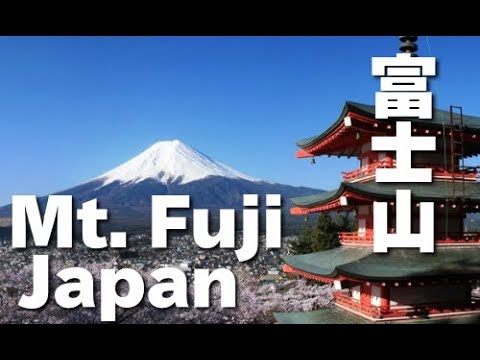Mount Fuji (Japan) 富士山が世界文化遺産に登録された理由のひとつが「信仰の対象」。富士山に登り参詣する動きは、早くからありました。室町時代に描かれた「絹本著色富士曼荼羅図」は、日月の中央に富士山がそびえ、登山道の下には浅間神社、さらにその下には禊のための川が流れています。江戸時代には信徒組織「富士講」が組織されるようになり、多くの信者が訪れ、それは現代でも引き継がれてきています。また、江戸時代の「富士曼荼羅」には、頂上の3 つの峰に阿弥陀三尊が存在しています。富士山頂上には、「古事記」に出てくる木花開耶姫命も祭られており、まさに神仏混合ですが、多様な信仰の対象して崇拝されてきました。
Mt. Fuji and Religious Beliefs
Mt. Fuji has long been revered as a sacred mountain; in the early Heian Period (9th century), a Sengen Shrine (a type of Shinto shrine which enshrines Konohana-sakuya-hime, a goddess associated with volcanoes and Mt. Fuji) was built at Mt. Fuji’s northern base in order to quell any eruptions.In the late Heian Period (11th century), Mt. Fuji became a center for the ascetic practices of the Shugen-do religion.
Though it might have changed a bit in form, the spirit of this unique mountain-climbing worship remains alive today, with many people climbing Mt. Fuji every year, mainly during the summer months of July and August. And you can still see to this day religious artifacts such as small shrines, stone monuments, and a variety of rituals being performed in and around the mountain trails.


AloJapan.com